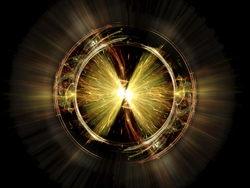Search for the totally unexpected from the LHC
The standard model describes how a collection of fundamental particles, which interacts with four forces (gravity, electromagnetism, and the strong and weak forces), makes up everything in our universe. Developed in the early 1970s, this model follows from a set of symmetry principles to explain almost every high-energy experiment conducted. To test the standard model, precision measurements of the Higgs sector of elementary particles are a major topic in the LHC physics programme. A different aim of these measurements was to search for deviations from the standard model predictions. The FPTLHC (From flavor precision tests to LHC discoveries) project team posited that these measurements might herald the existence of new physics. The effects of such new physics were searched for indirectly through deviations arising from the exchange of new particles. One example is additional Higgs bosons as predicted in supersymmetry, an extension of the standard model. In particular, low energy measurements based on high-statistics muon, kaon, tau, charm and B-meson production guided FPTLHC physicists in their search. Project members interpreted existing data related to changes in the flavour of particles by the weak force. This is not different in principle from changing their spin by electromagnetic interaction. The absence of deviations from the standard model predictions supports a standard model-like flavour structure. In a different approach to the standard model-like flavour structure, FPTLHC scientists assumed that the new physics flavour spectrum is anarchical. This scenario was explored through theoretical models and studies of the possible implications for low energy precision measurements. Two notable advances were made. The team provided a phenomenological description of the recently observed diphoton excess at invariant mass of 750 GeV in the ATLAS and CMS LHC detectors. They have also shown that precision atomic physics can potentially probe the atomic Higgs force with a precision that might surpass that of the LHC and LEP collider experiments. The interplay of the direct searches with the indirect searches remains to be investigated in the light of new experimental results from the LHC experiments. In particular, with the discovery of a Higgs-like boson after the first LHC results, but no other new particles, the importance of indirect tests is critical.



